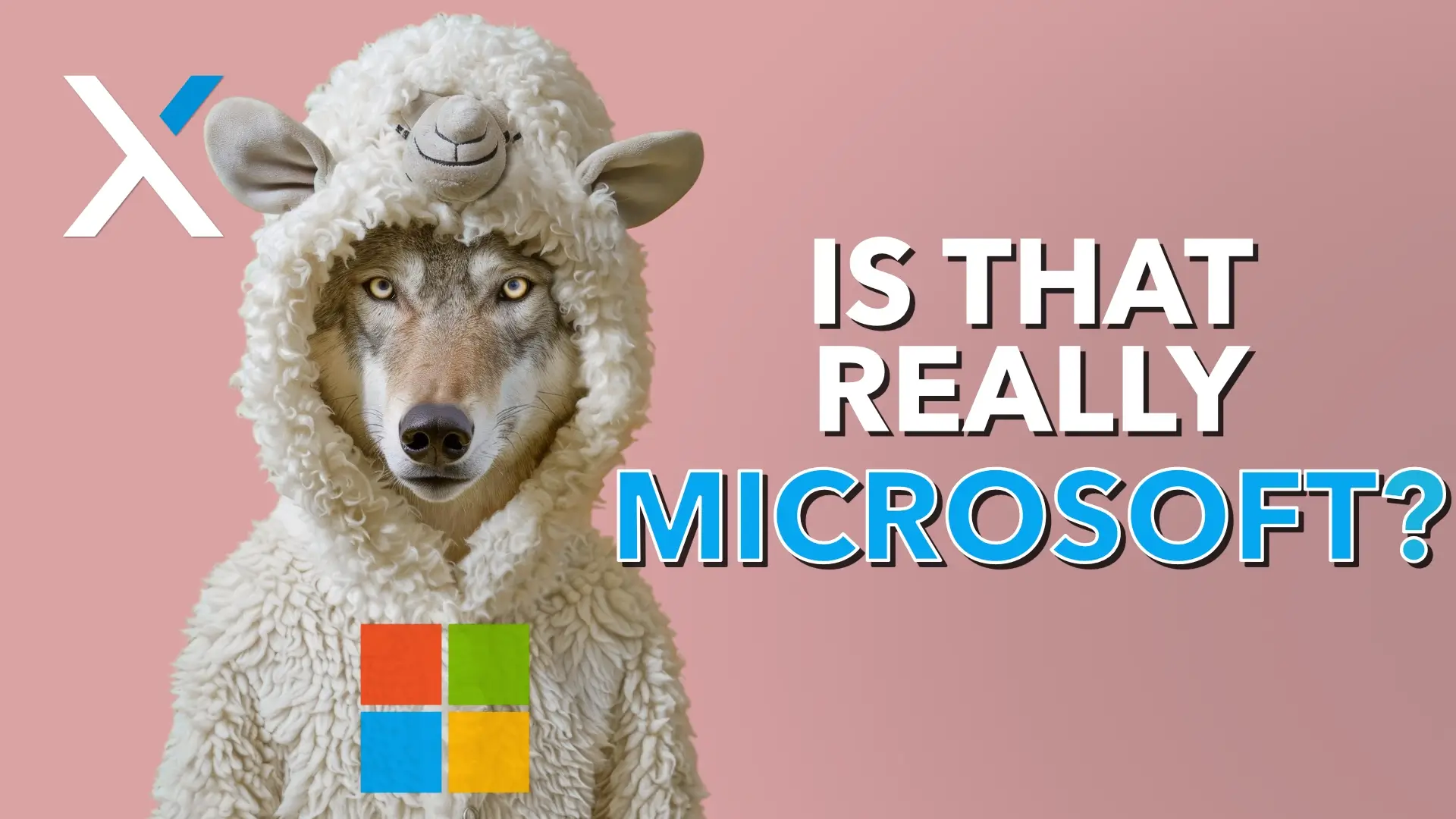You’re checking emails between patient charts or in the middle of payroll when it pops up: a message from Microsoft. It looks real. Has the logo. Mentions your account. Maybe even references your subscription.
But hold on.
What if it’s not from Microsoft at all?
A staggering 36% of phishing attacks so far this year have impersonated Microsoft. It’s now the most faked brand in cybercrime, with Google and Apple right behind it. And these aren’t sloppy, typo-ridden emails. These are polished, professional-looking traps designed to catch you off guard at your busiest moment.
Let’s be clear. These attackers are counting on your trust. They know that if you’re running a clinic, managing a law office, or juggling contractors across job sites, you don’t have time to second-guess every email.
That’s why they target brands you already use.
And for many business owners in the Valley, Microsoft 365 is the backbone: email, files, calendars, Teams. So if that system were to go down, or worse, get breached, the damage wouldn’t just be technical. It’d be emotional, financial, and operational.
Here’s how phishing really works. You get a message asking you to click a link or verify your account. It might even sound helpful, like “Security alert” or “Account at risk.” You click, not realizing it’s a fake site dressed up to look like the real deal. You type in your password, and just like that, they’ve got you.
They might log in right away and start poking around your files. Or they might wait, quietly watching your inbox, learning your billing patterns, planning a targeted attack that looks like it came from your own team.
Sound dramatic? Unfortunately, it’s real. We’ve seen it happen to clinics and businesses just like yours, folks who thought they were being careful.
Here’s how to spot fake emails (phishing):
- Pause before clicking. Real companies like Microsoft won’t threaten to lock your account without warning. If it sounds urgent or scary, take a breath.
- Check the sender’s email address. It might say “Microsoft” but actually be from something like “secure-micros0ft.info.” See that sneaky zero?
- Don’t click. Type the official site into your browser yourself. Go direct. Never trust a shortcut when it comes to security.
The stakes are high. It’s not just about avoiding a scam. It’s about protecting everything you’ve worked for; your client trust, your team’s jobs, your peace of mind.
The good news? You don’t have to shoulder this alone.
Here’s how to protect yourself:
There are simple, cost-effective protections that make phishing attacks a lot harder to pull off.
- Multi-factor authentication (MFA): Adds a second layer of security, so even if someone gets your password, they can’t get in.
- Email filtering tools: Catch the bad stuff before it ever reaches your inbox.
- Routine staff training: Because your employees are your first line of defense, and your biggest vulnerability if they’re not prepared.
If you’ve ever wondered whether your systems are really secure, or if that nagging feeling in your gut is trying to tell you something, now’s the time to listen.
You didn’t get into business to decode phishing links or chase down rogue logins. You built your company to serve people, solve problems, and make a difference.
Let us help keep it that way.
We’ll make sure you and your team know what to look for. We’ll handle the heavy lifting so you can focus on what really matters. Because trust is hard-earned, and in today’s world, it’s worth protecting with everything you’ve got.
Ready to stop guessing and start securing? Let’s talk.
